A 3-Step Process For Perfect USMLE Step 1 Preparation
If you want to crush your Step 1 exam, it’s imperative that you master the correct way to approach your USMLE Step 1 preparation.
We don’t want to waste your time with a long, drawn-out strategy that is more confusing than it is helpful…
So below we’ll give you a simple yet highly effective 3-step process for absolutely crushing your USMLE Step 1 preparation… Which will ultimately help you crush your Step 1 exam!

Step # 1: Have Complete & Detailed Step 1 Notes
This one is where many students fall short from the get-go and is often times a reason why they struggle to make progress with their USMLE Step 1 exam preparation.
In order to start your USMLE Step 1 prep the right way, you absolutely, positively need to have a rock-solid set of notes from which you will study.
This doesn’t mean having a study guide loaded with high-yield facts, it means having a highly detailed, comprehensive stack of notes that covers all of the tested topics on the exam.
There are essentially three ways to get these notes:
- Start creating USMLE Step 1-specific notes at the beginning of medical school and continued throughout… this takes time but is the ideal strategy.
- Go through all of your medical school notes after finishing your basic sciences and create a detailed set of notes… this could take months to accomplish.
- Attend a Step 1 prep course… this requires a small financial investment but will get you everything you need in an organized and speedy fashion.
The reason why you need to have a comprehensive set of study notes is because the volume of material that could be covered on the USMLE Step 1 exam is so vast…
If you don’t have access to a set of notes that can quickly and easily allow you to review anything at any point in time, you’ll not only miss out on an easy review resource but you might overlook topics or areas altogether… This could of course hurt your score.
So… get your hands on a thorough and highly detailed set of study notes.
As you progress through your studies, you’ll be able to condense everything into fewer and fewer pages.
But you should start with a large volume of information so that nothing is missed!
Step #2: Use A Question Bank The Right Way
The correct way of using a question bank is lost upon many medical students…
But that’s not your fault!
Nobody is actually teaching students how to get the most out of their time and efforts with the QBanks…
But it’s our job to ensure that you know how to get the most out of your efforts…
So here’s a few tips to keep in mind that will help you get the most out of your question bank efforts:
- Start by doing your questions in a topic-specific manner (ie. Do Genetics questions as part of your ‘Genetics’ review)… You can mix up your questions later.
- Do questions in full blocks and always in timed mode (this helps you practice questions the same way you’ll see them on the exam – practice for the real thing).
- Following each block of questions, do a slow and thorough review, and be sure to take notes from each question.
- Review every detail from each question (Don’t just review the correct answer… take this opportunity to learn about all of the answer choices that weren’t the correct option for this question… You should learn at least 5 things from each question).
- Have a separate notebook with all of the information you gather from your question bank questions.
- Set aside 30 minutes per day to review the information in your question bank-specific notebook.
If you follow this approach, not only will you become better and more efficient at answering questions, but you’ll provide yourself with another way to properly review the USMLE information.
Step #3: Learn How To Properly Use NBME Exams
Before we give you a strategy for properly implementing NBME exams into your USMLE Step 1 preparation strategy, you need to take the following piece of advice very seriously…
Do not take your USMLE Step 1 exam (or any of your USMLE’s for that matter) until you’ve achieved your desired score (preferably 20 points above) on at least 2 NBME exams…
That might sound like overdoing it… But here’s the thing… From our experience, students typically see a 15-20 point drop from NBME score to USMLE score… Which happens for a variety of reasons.
And because of this, we always suggest that you score above your target goal on your NBME exams, and we recommend seeing that result on two NBME’s that you’ve never done before.
The reason for this is simple… We want you to score high enough that you prove to yourself that you can achieve your ideal score, and we want you to have a buffer so that in case you drop slightly on exam day, you can still meet your goals.
A Simple Step-By-Step Strategy For Using NBME Exams:
- We suggest taking an NBME pre-preparation so that you can identify your areas of weakness and give a bit more focus on them as you proceed through your preparation.
- Following your first run-through of all material (this means a slow, deliberate and active run-through of all material + QBank), do another NBME.
- Based on the NBME result, identify your weakest areas (anything to the left of the borderline marker).
- Dedicate 1 full week of study to all identified weaknesses (using review notes, course books, questions, etc).
- Take an NBME exam following your re-review of all weak areas.
- Repeat steps 3-5 until you’ve achieved your desired score (remember you should have two NBME’s that are within your desired range + 20 points as a buffer).
- Once your goal has been achieved via NBME exam, sit and write your exam with confidence.
And that’s all there is to it!
It really isn’t too difficult to put together a strong USMLE Step 1 preparation strategy. If you know which tools to use and how to use them, your life is much easier.
Of course… The work that goes into your preparation is intense and exhausting.
But as long as you’re starting out with a plan in place and a goal in mind, it will make the rest of the process much easier to navigate.
